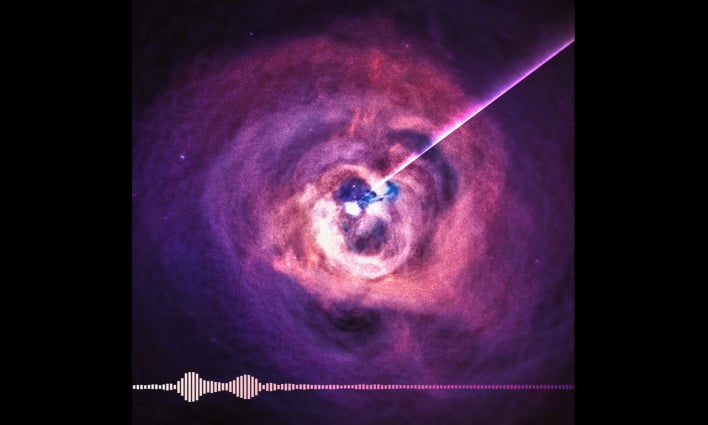This Is What A Black Hole Sounds Like And It's Spooky AF, Thanks NASA

The black hole at the center of the Perseus galaxy cluster has been associated with sound since 2003 by astronomers. This is because they discovered that pressure waves sent out by the black hole cause ripples in the cluster's hot gas that could be translated into a musical note. However, these notes are believed to be at some 57 octaves below middle C, or one we humans cannot hear. In true NASA tradition, it has produced a new sonification that brings these eerie sounds to life.
The new sonification is actually the translation of astronomical data into sound from the black hole and is unlike any other done before. This is because it utilizes actual sound waves discovered in data from NASA's Chandra X-ray Observatory.
The black hole at the center of the sound stage of NASA's sonification gets past the typical space vacuum sound barrier, due to its close proximity to the cluster's gas. Therefore, it can create sound wave vibrations, and those are the hot gas ripples scientists are honed in on.
The sound waves were extracted outwards from the center, or in radial directions. The signals were then resynthesized upward by 57 and 58 octaves above their true pitch in order to place them into the range of human hearing. In other words, they are being heard 144 quadrillion and 288 quadrillion times higher than their original frequency.
Messier 87 does not seem to produce the same type of horror soundtrack as Perseus' void, but rather resembles the soothing sounds one might find in a meditation app. This is because it is the product of three different sources of data: Chandra, optical light from Hubble, and radio waves from the Atacama Large Millimeter Array in Chile, all overlayed on top of one another. The high tones are delivered via X-rays, medium tones through optical light, and radio waves convey the lowest tones.
Top Image Courtesy of NASA

